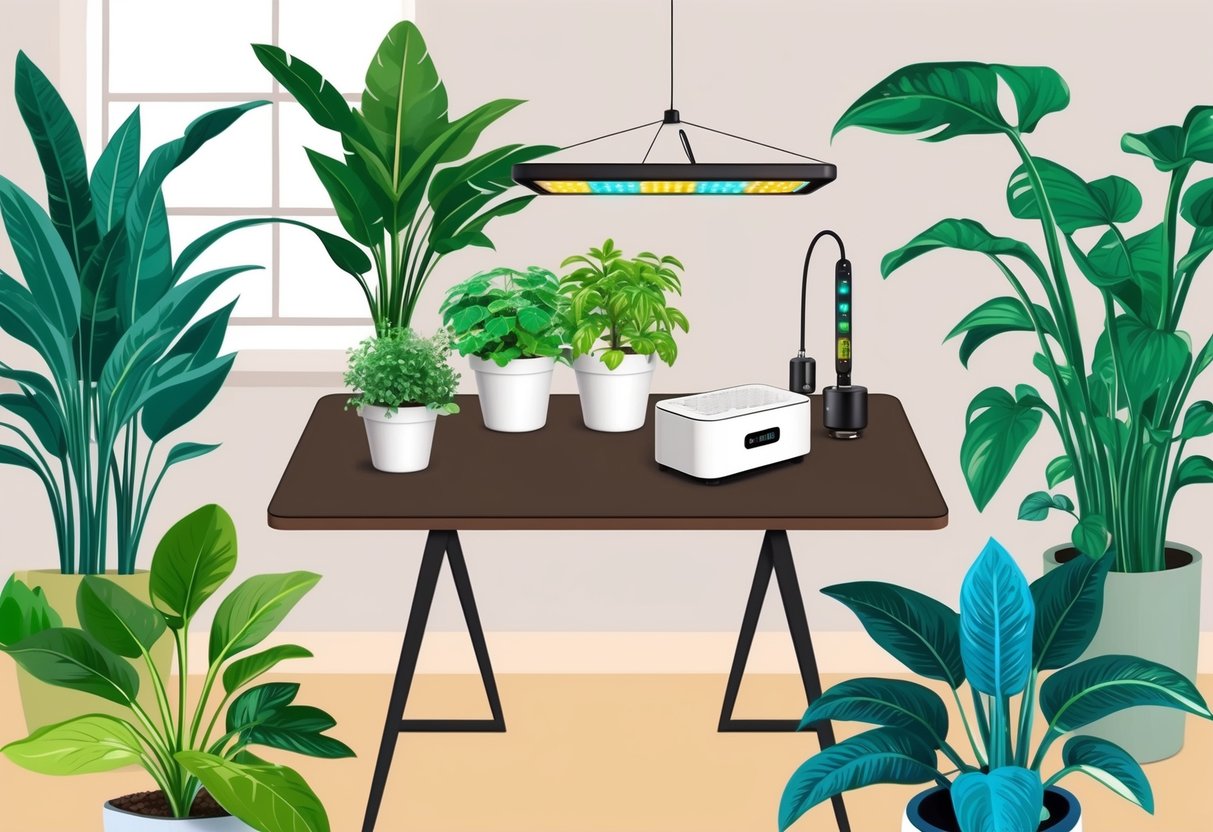
Modern gardening no longer has to mean hours of manual labor and guesswork. Today’s smart gardening tools make it possible to automate garden maintenance, monitor soil and plant health, and ensure optimal watering with little effort.
The best smart gardening tools range from automated irrigation systems and smart soil sensors to garden management apps and weather monitoring devices. Products like the B-hyve Smart Hose Faucet Timer, soil moisture sensors, and app-connected hubs are designed to provide real-time updates and alerts, helping users prevent overwatering, nutrient deficiencies, and other common issues.
Smart planters and wireless garden management systems further streamline tasks for both beginner and advanced gardeners. These tools make efficient use of resources and support sustainable practices.
Exploring the top-rated options for smart gardening technology can transform garden care and boost plant health and yield. Automated water systems, weather stations, and other essential smart gardening tools can provide a valuable upgrade to any garden setup.
Understanding Smart Gardening Tools
Smart gardening tools use advanced technologies to automate and simplify tasks like watering, monitoring soil health, and tracking plant growth. These devices help garden owners save time, use water and nutrients efficiently, and promote healthier, more vibrant plants.
What Makes A Tool Smart?
A smart gardening tool is equipped with sensors, connectivity features, or automation that allow it to work without constant manual intervention. Examples include smart hose timers, robot lawn mowers, and soil sensors that can analyze moisture or nutrient levels.
These tools often connect to a mobile app or a smart home ecosystem, providing real-time updates and control remotely. For instance, a gardener can adjust irrigation schedules from a smartphone or receive alerts when soil conditions change.
Features such as automated adjustments and integration with weather data enhance the “smart” aspect, enabling tools to react automatically to environmental changes. This reduces guesswork and helps keep plant care consistent and accurate.
Key Features to Look For
When choosing a tool for a smart garden, critical features should include wireless connectivity, app-based control, and reliable sensors. Look for devices compatible with established platforms like Wi-Fi, Bluetooth, or smart home hubs.
Important functions might include remote scheduling, real-time data visualization, and integration with weather services for automated adjustments. For example, some irrigation systems can skip watering if rainfall is detected, saving water and preventing overwatering.
Battery life, durability, and ease of setup also play key roles in long-term usability. Some smart gardening options—such as smart soil sensors, automated irrigation, or smart planters—are designed for seamless integration and efficiency.
Benefits of Smart Gardening for Effortless Maintenance
Smart gardening tools simplify garden maintenance by streamlining daily tasks and improving plant health. They help users manage time and resources better through automated care, precise monitoring, and targeted interventions for healthier, thriving plants.
Time-Saving Automation
Automated irrigation systems and programmable sprinklers distribute water based on real-time plant needs, eliminating guesswork and manual adjustments. Smart timers can be set for fertilization and lighting, ensuring plants receive optimal care even when the gardener is away.
Gardeners can remotely control schedules through smartphone apps, easily adjusting for weather changes without being on site. By shifting routine maintenance tasks to automated tools, there is significantly less time spent watering, feeding, and monitoring plants.
Automated solutions reduce errors caused by irregular or inconsistent care. With less hands-on involvement required, garden maintenance becomes both faster and more efficient.
Reduced Manual Labor
Smart soil sensors and automated mowers significantly cut down on physical effort. Soil sensors continually measure moisture, pH, and temperature to advise on precise watering or soil amendments.
This data-driven guidance eliminates repetitive digging and manual soil checks, making maintenance less physically demanding. Robotic lawn mowers independently trim the lawn, freeing users from tedious mowing sessions.
Powered weeding robots and targeted irrigation save gardeners from hours of labor-intensive bending, pulling, or hauling hoses. Smart gardening systems can notify gardeners only when intervention is needed.
This leads to a lighter, more manageable workload and allows people of varying physical abilities to achieve effective garden maintenance.
Enhanced Garden Maintenance
Enhanced garden maintenance comes from using sensors and devices that provide up-to-date information on plant and soil conditions. With real-time alerts on moisture, nutritional status, or pest threats, gardeners can make informed decisions to support healthy growth.
Smart monitoring ensures issues like under-watering, nutrient deficiencies, or emerging pests are identified before they cause harm. As a result, plants are healthier and less susceptible to disease or stress.
Data logged by smart plant sensors can reveal trends in plant health, helping gardeners adjust routines for consistently improved results.